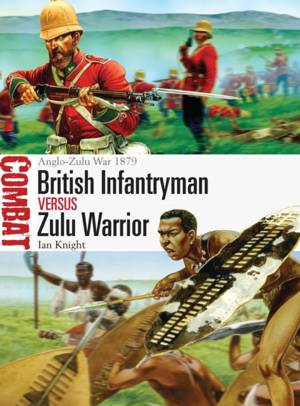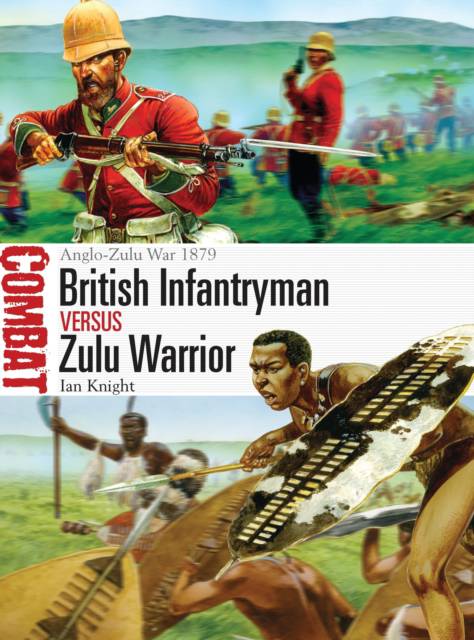
- Retrait gratuit dans votre magasin Club
- 7.000.000 titres dans notre catalogue
- Payer en toute sécurité
- Toujours un magasin près de chez vous
- Retrait gratuit dans votre magasin Club
- 7.000.0000 titres dans notre catalogue
- Payer en toute sécurité
- Toujours un magasin près de chez vous
Description
Expert ananlyis and first-hand accounts of combat during the Anglo-Zulu war in 1879: Nyezane, iSandlwana, and Khambula. As seen in the movie Zulu, starring Michael Caine, Zulu discipline and courage overcame British firepower at iSandlwana, and almost at Rorke's Drift. Featuring specially commissioned artwork, expert analysis and carefully chosen first-hand accounts, this absorbing study traces the development of infantry tactics in the Anglo-Zulu War by examining three key clashes at unit level.
The short but savage Anglo-Zulu War of 1879 pitched well-equipped but complacent British soldiers and their auxiliaries into combat with one of history's finest fighting forces, the Zulu Nation. The clashes between these two very different combatants prompted rapid tactical innovation on both sides, as the British and their Zulu opponents sought to find the optimal combination of mobility and firepower. Fought on 22 January 1879, the clash at Nyezane saw Zulu forces, among them the uMxapho ibutho, ambushing a British column; the British forces, including Lieutenant Martin's company of the 2/3rd Foot, engaged their opponents in the prescribed fashion, as honed in the recent conflict with the Xhosa a year earlier. The Zulu attack was premature, and by 9.30am, after about 90 minutes of heavy fighting, they were repulsed. The British tactics worked, but largely only because the Zulus had an uncharacteristically low numerical superiority. At iSandlwana later that same day, however, the shortcomings of the British tactics, obscured at Nyezane, were made brutally apparent. The Zulus had sufficient manpower not only to withstand that level of casualties but also to complete their encirclement of the British forces, and as the British line disintegrated the firefight gave way to the close-quarter fighting at which the Zulus excelled; not one man of the 1/24th and 2/24th Foot survived. The British forces surrounded and crushed at iSandlwana included Captain W.E. Mostyn's company of the 1/24th Foot, which was initially deployed in advance of the British camp but was later withdrawn to form part of the firing line; their opponents included the iNgobamkhosi ibutho, many of whose warriors left first-hand accounts of the battle. While iSandlwana demonstrated the strengths of the Zulu tactics, it also demonstrated their weaknesses - for the casualties inflicted by the British foreshadowed the carnage they would reap once the British wholeheartedly embraced close-order tactics and defended positions. At Khambula on 29 March 1879, a much bigger British force adopted a defensive position and defeated the same Zulu units who had previously triumphed at iSandlwana, including the uKhandempemvu ibutho, which came close to storming the British defences. At iSandlwana, the Zulus had been able to screen their advance with skirmishers and take advantage of the broken and grassy ground, but at Khambula their spontaneous attack did not allow them to disperse properly and they were funnelled together on a contracting front over woefully exposed ground. The British had learned the tactical lessons of iSandlwana and deliberately sought to restrict the Zulu ability to manoeuvre and co-ordinate their attacks, and to concentrate their own firepower.Spécifications
Parties prenantes
- Auteur(s) :
- Editeur:
Contenu
- Nombre de pages :
- 80
- Langue:
- Anglais
- Collection :
- Tome:
- n° 3
Caractéristiques
- EAN:
- 9781782003656
- Date de parution :
- 22-10-13
- Format:
- Livre broché
- Format numérique:
- Trade paperback (VS)
- Dimensions :
- 180 mm x 254 mm
- Poids :
- 249 g

Les avis
Nous publions uniquement les avis qui respectent les conditions requises. Consultez nos conditions pour les avis.






